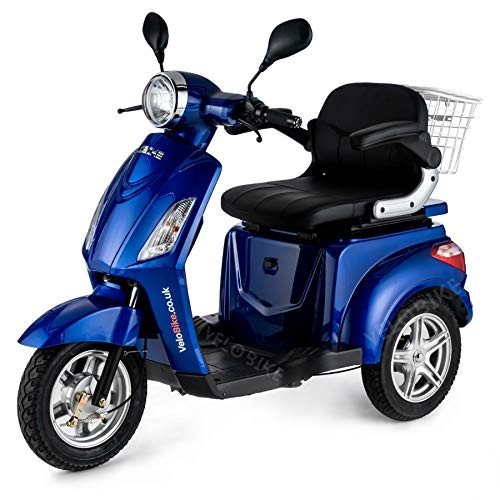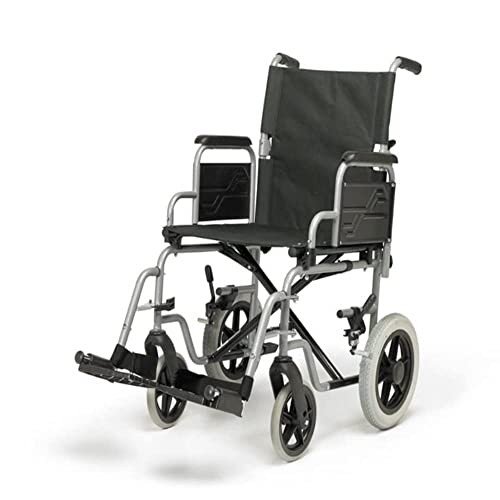Mobility Scooters Near Me: A Comprehensive Guide to Accessible Transportation
For individuals with mobility problems, particularly older adults and those recovering from injuries or surgeries, keeping independence and mobility is vital. Mobility scooters have emerged as a crucial service, providing a trustworthy and comfortable means of transportation for those who discover walking difficult. However, discovering the right mobility scooter and comprehending the options available can be overwhelming. This guide aims to streamline the procedure of finding and picking a mobility scooter near you, making sure that users can confidently navigate their daily lives.
What is a Mobility Scooter?
A mobility scooter is a motorized automobile created to help individuals with minimal mobility Scooter Ramps. Typically, these scooters feature a comfy seat, handlebars for steering, and a battery-powered motor that propels the vehicle. They are ideal for both indoor and outside use, making it possible for users to take a trip longer distances without fatigue. Mobility scooters can be found in a range of sizes and designs, each accommodating various requirements and environments.
Kinds Of Mobility Scooters
Before diving into the procedure of discovering a mobility scooter near you, it's necessary to understand the different types available:

1. Three-Wheel Scooters
- Pros: More maneuverable, particularly in tight areas.
- Cons: Less stable on uneven terrain.
2. Four-Wheel Scooters
- Pros: More steady, much better matched for outside use and irregular surfaces.
- Cons: Larger turning radius, may require more area.
3. Portable Scooters
- Pros: Lightweight and easy to dismantle for transport.
- Cons: May have limited battery life and speed.
4. Heavy-Duty Scooters
- Pros: Built to support much heavier users and carry more weight.
- Cons: Larger and less portable.
5. Standing Scooters
- Pros: Ideal for users who prefer standing or have actually restricted seating alternatives.
- Cons: May not be as comfortable for longer rides.
How to Find a Mobility Scooter Near You
1. Regional Retail Stores
- Pros: Ability to test the scooter before acquiring, instant accessibility.
- Cons: Limited selection, higher prices.
- Tips: Visit stores like Walmart, Target, or local medical supply stores. Ask if they offer test drives or have designs on screen.
2. Online Shops
- Pros: Wide choice, competitive pricing, detailed item reviews.
- Cons: Can not test the scooter personally, potential shipping delays.
- Tips: Websites like Amazon, Alibaba, and specialized mobility scooter merchants use thorough choices. Read evaluations and compare functions before buying.
3. Rental Services
- Pros: Ideal for short-term needs, no long-lasting commitment.
- Cons: Costly with time, minimal availability in some locations.
- Tips: Check with local medical equipment rental companies or online platforms like RentACenter. Make sure the rental arrangement covers maintenance and support.
4. Second-Hand Markets
- Pros: More cost effective, typically well-kept.
- Cons: Risk of buying a defective product, absence of service warranty.
- Tips: Explore classifieds, Facebook Marketplace, and specialized pre-owned mobility equipment stores. Inspect the scooter thoroughly and request maintenance records.
5. Neighborhood Resources
- Pros: Local support and suggestions, capacity for subsidies or grants.
- Cons: Availability might vary by place.
- Tips: Contact local senior centers, disability organizations, and community health centers. They typically know on local resources and programs.
Elements to Consider When Choosing a Mobility Scooter
1. User Needs
- Mobility Level: Assess the user's ability to walk, transfer, and handle the scooter.
- Weight Capacity: Ensure the scooter can support the user's weight.
- Indoor/Outdoor Use: Determine if the scooter will be used mostly inside your home, outdoors, or both.
2. Scooter Features
- Battery Life: Longer battery life is important for extended usage.
- Speed and Range: Consider the speed and range needed for everyday activities.
- Portability: If travel is a top priority, try to find lightweight and collapsible options.
- Seating: Comfortable and adjustable seating is crucial for extended usage.
- Storage: Check for storage alternatives for personal products.
3. Spending plan
- Cost: Mobility scooters can range from a few hundred to numerous thousand dollars.
- Financing Options: Explore funding choices, insurance coverage, and government support programs.
4. Maintenance and Support
- Service warranty: Ensure the scooter features a comprehensive warranty.
- Service Centers: Check the schedule of local service centers for maintenance and repair work.
- Consumer Support: Look for manufacturers with great customer support and user resources.
FAQs About Mobility Scooters
Q: Are mobility scooters simple to utilize?
- A: Yes, a lot of mobility scooters are designed with user-friendly controls. They usually have simple steering, speed controls, and braking systems. Nevertheless, it's always a good idea to practice in a regulated environment before using them in public.
Q: Can I use a mobility scooter inside?
- A: Absolutely! Many mobility scooters are developed for both indoor and outdoor use. They are especially beneficial in large homes or industrial buildings where long ranges require to be covered.
Q: How much does a mobility scooter expense?
- A: The cost of a mobility scooter can vary commonly depending on the type, brand name, and features. Standard models can start around ₤ 300, while more sophisticated and heavy-duty scooters can cost numerous thousand dollars. Look for financing options and federal government support to make it more budget friendly.
Q: Do I require a prescription to buy a mobility scooter?
- A: No, a prescription is not needed to purchase a mobility scooter. However, seeking advice from a health care provider can help determine the best kind of scooter for your particular requirements.
Q: Can I get insurance coverage for a mobility scooter?
- A: Some health insurance coverage policies, consisting of Medicare and Medicaid, may cover the expense of a mobility scooter under particular conditions. Inspect with your insurance coverage provider for details.
Q: How do I preserve my mobility scooter?
- A: Regular maintenance is key to keeping your mobility scooter in great working condition. This includes:
- Charging the Battery: Follow the manufacturer's standards for battery charging.
- Inspecting Tires: Ensure tires are appropriately inflated and in great condition.
- Examining Brakes and Lights: Regularly check the brakes and lights for appropriate performance.
- Cleaning up: Wipe down the scooter and keep it clean to prevent corrosion and wear.
Top Mobility Scooter Brands
1. Pride Mobility
- Pros: Known for top quality and durable scooters.
- Cons: Can be costlier than some other brands.
- Designs: Pride Go-Go Elite, Voyager 4-Wheel Scooter.
2. Golden Technologies
- Pros: Offers a vast array of designs, consisting of portable and sturdy scooters.
- Cons: Some designs might have limited speed and variety.
- Designs: Golden Travelmate 3, Golden Companion 4-Wheel.
3. Rascal Mobility
- Pros: Affordable and dependable alternatives.
- Cons: Limited customer support in some locations.
- Designs: Rascal 20D, Rascal 40.
4. Drive Devilbiss Healthcare
- Pros: Innovative functions and easy to use styles.
- Cons: Higher-end models can be costly.
- Designs: Drive GX Warrior 4-Wheel Scooter, Drive Medical Roadster 3.
5. Merit Mobility
- Pros: Versatile and budget-friendly designs.
- Cons: Some users report less toughness compared to top-tier brands.
- Designs: Merit Heavy Duty 3 Wheel Scooter, Merit 4 Wheel Foldable Scooter.
Tips for Safe Use of Mobility Scooters
1. Read the Manual
- Why: Understanding the operation and maintenance of your scooter is important for security.
- How: Make sure to check out the user manual thoroughly before utilizing the scooter.
2. Use Protective Gear
- Why: Protective equipment can reduce the risk of injury in case of a mishap.
- How: Wear a helmet, gloves, and suitable shoes.
3. Observe Traffic Rules
- Why: Following traffic rules ensures safe and responsible usage of your scooter.
- How: Use designated bike lanes or sidewalks, and comply with traffic indications and signals.
4. Routine Maintenance
- Why: Regular maintenance keeps your scooter in optimal condition and extends its life-span.
- How: Check the battery, tires, brakes, and lights frequently. Schedule professional upkeep as required.
5. Stay Visible
- Why: Visibility is important, especially during low-light conditions.
- How: Use reflective equipment, lights, and flags to increase exposure.
Finding the right mobility scooter near you is an important action towards keeping self-reliance and enhancing lifestyle. By understanding the different kinds of scooters, considering your specific requirements, and checking out different sources, you can make an informed decision. Whether you choose a local store, an online retailer, or a rental service, the secret is to discover a scooter that meets your requirements and fits your budget plan. With the best mobility scooter, you can take pleasure in the liberty to move around with ease and self-confidence.
Additional Resources
- Local Senior Centers: Often know on mobility scooters and local resources.
- Disability Organizations: Provide insights and support for individuals with mobility issues.
- Government Assistance Programs: Check for grants or aids that can assist cover the expense.
- Online Reviews and Forums: Read user experiences and ask concerns in mobility scooter online forums.
By taking the time to research study and select the best mobility scooter for your requirements, you can take pleasure in a more secure, more comfortable, and more independent lifestyle.









